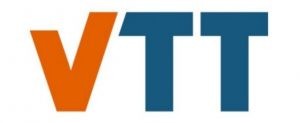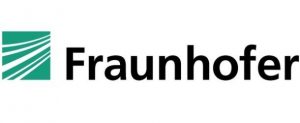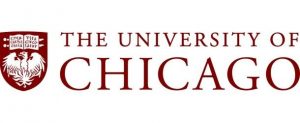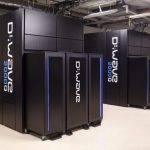Quantum News Briefs September 19: Researchers at VTT Technical Research Centre unlock chip-based thermionic cooling for quantum computers; Bavaria’s REPLY project to bring practical usability of quantum computing in industrial applications; WISeKey’s WISeSat.Space & Spain’s PLD Space aim to revolutionize picosatellites for quantum-ready internet + MORE

Quantum News Briefs September 19:.
Researchers at VTT Technical Research Centre unlock chip-based thermionic cooling for quantum computers
 Researchers from a team at the VTT Technical Research Centre of Finland designed a vacuum-tube-like device that allows for cooling to happen in a purely electronic way – a possible road toward slashing cooling costs for dilution-refrigerated quantum computers by a factor of ten. In their experiments, the researchers found their design allowed for temperatures to drop by as much as 40%. Quantum News Briefs summarizes the September 17 article by Francisco Pires in which he describes this research.
Researchers from a team at the VTT Technical Research Centre of Finland designed a vacuum-tube-like device that allows for cooling to happen in a purely electronic way – a possible road toward slashing cooling costs for dilution-refrigerated quantum computers by a factor of ten. In their experiments, the researchers found their design allowed for temperatures to drop by as much as 40%. Quantum News Briefs summarizes the September 17 article by Francisco Pires in which he describes this research.
One of the fundamental limits to any high-level computation is cooling capacity – the ability to draw computationally generated heat away from operating circuits. This particular limit is seen everywhere these days. But quantum computers are even more sensitive than traditional electronics – they’re more prone to outside interference, and are more fickle as to what types of interference can collapse their useful, working qubit states. So new techniques that allow for simpler, more efficient cooling are much in need.
The Finnish scientists at VTT developed a thermionic device that sheds heat in the form of electrons (channeling electrons requires energy, which is why thermionic devices taking advantage of the Peltier effect usually introduce yet another energy-consumption step). But crucially, this device allows cooling to be taken almost to its extreme: the researchers expect to be able to cool electronics down to a range between 1.5 K and 0.1 K – more than sufficient to serve as a fundamental cooling mechanism for “absolute-zero” computing. And this technique should be much smaller, less expensive, and less prone to errors from both a logistical and operational standpoint compared to fluid-based cooling.
“Our technology could help the industry scale down overall quantum computer system size,” said Mika Prunnila at the VTT Technical Research Center of Finland, in Espoo. Click here to read the original article in-entirety in Tom’s Hardware,
Bavaria’s REPLY project to bring practical usability of quantum computing in industrial applications
 Reply is part of the research project”Bench-QC, which stands for application-driven benchmarking of quantum computing. The focus of the project, which is funded by the Bavarian State Ministry of Economic Affairs, Regional Development and Energy, is the practical usability of quantum computing in industrial applications. The initiative, consisting of industrial partners and Fraunhofer institutes, specifically identifies the applications for which quantum computing can provide a benefit to companies.
Reply is part of the research project”Bench-QC, which stands for application-driven benchmarking of quantum computing. The focus of the project, which is funded by the Bavarian State Ministry of Economic Affairs, Regional Development and Energy, is the practical usability of quantum computing in industrial applications. The initiative, consisting of industrial partners and Fraunhofer institutes, specifically identifies the applications for which quantum computing can provide a benefit to companies.
The goal of the Bench-QC project is to investigate when quantum computers produce better results than classic high-performance computers. Reply has the role of consortium leader and is bringing in already implemented use cases in various industries in the field of quantum-inspired optimization.
Filippo Rizzante, CTO at Reply, commented: “We are very excited to bring quantum computing into practice. With this initiative, we want to bring academic discussions to the business world and show companies how they can use quantum computing commercially and the benefits they can derive from it. That is why we have developed quantum-inspired algorithms that allow us to describe and optimize complex situations, giving companies time and cost savings”.
In addition to Reply, the project partners include BMW, and the two Fraunhofer institutes for Integrated Circuits IIS, and for Cognitive Systems IKS. The lighthouse project, scheduled for three years, is part of the Munich Quantum Valley of the Bavarian state government, and aims to establish expertise in quantum computing and quantum technologies in Bavaria.
Reply has the role of consortium leader and is bringing in already implemented use cases in various industries in the field of quantum-inspired optimization. Reply has developed an efficient classical solver for QUBO (quadratic unconstrained binary optimization) problems: the Reply tool “MegaQUBO” finds solutions for tens of thousands of variables within seconds. Reply’s reference implementation for hybrid neural networks is also included in the benchmarking project. Click here to read complete original announcement.
WISeKey’s WISeSat.Space & Spain’s PLD Space aim to revolutionize picosatellites for quantum-ready internet
 WISeKey International Holding Ltd., leading global cybersecurity, AI, Blockchain, and IoT company, announced on September 14 it has joined forces with the Spanish rocket company PLD Space, for the Launch of Next-Generation Ultra Secure Satellites. Quantum News Briefs summarizes.
WISeKey International Holding Ltd., leading global cybersecurity, AI, Blockchain, and IoT company, announced on September 14 it has joined forces with the Spanish rocket company PLD Space, for the Launch of Next-Generation Ultra Secure Satellites. Quantum News Briefs summarizes.
WISeSat.Space, a Swiss pioneering satellite technology platform with 17 of WISeSat-ready satellites already on orbit, has signed a strategic partnership with PLD Space, the European leader in small satellite space launches. Together, they aim to revolutionize the launch of the next generation of ultra-secure WISeSat.Space picosatellites for Quantum-Ready Internet of Things (IoT) communications.
The collaboration seeks to integrate the VaultIC408 secure element into each network endpoint, ensuring premium security levels throughout the IoT ecosystem. With a sharp focus on advanced miniaturization techniques, the partnership’s goal is to provide cost-effective and accessible solutions, enabling businesses of all sizes to afford dedicated satellites for their connectivity needs.
To date, seventeen WISeSat-ready satellites have been launched into orbit with SpaceX as part of an 80-satellite constellation. These satellites are capable of delivering real-time IoT connectivity on a global scale for industrial applications, offering an impressive data latency of merely 10 hours.
Through the joint effort of SEALSQ and WISeSat, the forthcoming generation of WISeSat-ready satellites will incorporate groundbreaking post-quantum solutions. The microchips and devices, engineered to withstand the evolution of computational power, are suited for a multitude of applications, including multi-factor authentication devices, to ensure absolute data security in the quantum age. Click here to read the September 14 announcement in-entirety.
UChicago, IIT Bombay form new science and technology partnership
 At the G20 Summit in New Delhi, India, the governments of India and the U.S. announced on Friday, September 8 that the University of Chicago (UChicago) and the Indian Institute of Technology Bombay (IIT Bombay) have forged a new collaborative science and technology partnership to share research on quantum technology and other advanced scientific fields such as climate and energy, advanced microelectronics, artificial intelligence and data science. Quantum News Briefs summarizes below.
At the G20 Summit in New Delhi, India, the governments of India and the U.S. announced on Friday, September 8 that the University of Chicago (UChicago) and the Indian Institute of Technology Bombay (IIT Bombay) have forged a new collaborative science and technology partnership to share research on quantum technology and other advanced scientific fields such as climate and energy, advanced microelectronics, artificial intelligence and data science. Quantum News Briefs summarizes below.This partnership reaffirms the goals of the U.S.-India initiative on Critical and Emerging Technology “to elevate and expand our strategic technology partnership and defense industrial cooperation between the governments, businesses, and academic institutions of our two countries.” For UChicago, it serves not only to advance current collaboration on the new and emerging technologies but also helps build a pipeline for developing future talent in these fields.
The agreement unites two of the world’s premier quantum ecosystems and was announced in a statement issued by the White House. The Chicago area has developed into a leading global hub for research in quantum technology in recent years. UChicago sits at a nexus of quantum innovation, especially given the establishment of the Pritzker School of Molecular Engineering a decade ago. The region is also home to the Chicago Quantum Exchange (CQE), an intellectual hub based at UChicago and anchored by the U.S. Department of Energy’s Argonne National Laboratory and Fermi National Accelerator Laboratory, the University of Illinois Urbana-Champaign, the University of Wisconsin-Madison, and Northwestern University.
Sandra K. Helsel, Ph.D. has been researching and reporting on frontier technologies since 1990. She has her Ph.D. from the University of Arizona.



















